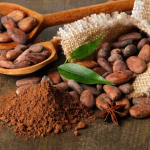The human body is indeed a marvel. Thera many organs and systems working as functions to help humans live and survive in the many environment and life changes. This makes humans a great being living in a social setting. The blood circulation system is one of the most important systems in the human body. It consists of long blood vessels of about 100 000 kilometres in length and heart as its engine. This fascinating system is also the main reason why when a disease strikes, it can cause discomfort symptoms, sometimes even leading to death. Medicines such as Exforge 5/80 mg helps to improve the blood circulation system. In this article, we will be focusing on what blood vessel disease and its causes.
Before going on about blood vessel disease, what exactly is a blood vessel? The blood vessels contain arteries, veins and capillaries. The difference in the structures of each of these structures explains its function. All arteries except pulmonary arteries carry away blood from the heart and distribute oxygen-rich blood to the body. All veins except pulmonary veins collect oxygen-poor blood throughout the body and carry the blood back to the heart. Capillaries, tiny blood vessels connecting small arteries to small veins, aids in the exchange of materials between the blood and tissue cells.
Blood vessel diseases affect the blood vessel functions or changes to structures of the blood vessels. Blood vessel diseases are also known as vascular diseases. There can be many causes leading to vascular disease, this includes genetics, blood vessels change such as build-up of plaque in the arteries and blockage of the blood vessels by blood clots (thrombus) or debris (embolus), injury, infection, inflammation and injury. Vascular diseases may affect anyone of any age. Some people are born with vascular diseases due to genetic inheritance from parents, some may be developing at a young age and some are caused by problems that occur in middle age. Those at risk for vascular diseases includes people with diabetes, family history of vascular disease associated with heart attack and stroke, high blood pressure, high level of cholesterol and bad fat such as triglycerides and LDL, obesity, stress and unhealthy lifestyle such as smoking or being physically less active.
There are many types of vascular diseases. Below are examples of the common types:
1) Atherosclerosis. A condition affecting the arteries causing hardening of the arteries and narrowed due to build-up plaques inside the artery. The plaque is made up of substances mainly cholesterol with other substances such as blood cells, fibrin and waste products. Common forms of atherosclerosis are coronary heart disease, carotid artery disease and peripheral artery disease.
2) Deep vein thrombosis. Blood clots in the vein inside the muscle of the body, usually in the lower leg. If the clot breaks loose and travels to the lungs, it can lead to pulmonary embolism which is a life-threatening event.
3) Aneurysm. Bulge in a blood vessel that is caused by weakness in the blood vessel walls.
4) Vasculitis. Inflammation of the blood vessels. It is caused by the immune system attacking the healthy blood vessels. It is also known as an autoimmune disease.
5) Varicose vein. Swollen and enlarged veins that are typically found on the legs and feet. The veins appear blue or dark purple with a bulging or twisted appearance and are often lumpy.
6) Raynaud’s phenomenon. Also known as Raynaud’s disease or Raynaud’s syndrome is a condition affecting the blood supply to parts of the body, usually affecting fingers and toes. It is due to spasm of the blood vessels that cause symptoms such as cold hands or toe and changing colour of whitish to bluish if the finger or toes. Symptoms last from minutes up to hours.
The above mentioned are just part of the many vascular diseases. Symptoms of vascular diseases vary according to the type of blood vessels disease. It is diagnosed by a doctor getting medical history from a patient and physical examination. Doctors might also do further tests such as blood tests and imaging test like vascular ultrasound and angiography to get to the core of the causes of the blood vessels diseases by understanding and looking closely at the blood vessels structures. Treatment ranges from medicine to surgery. Common medicines used to treat vascular diseases are antiplatelets, anticoagulants, anticholesterolemic agents and antihypertensive drugs. Surgery such as angioplasty, bypass and stent-graft surgery are among the common surgeries for vascular diseases.
It can be concluded that there can be many types of blood vessels diseases and many causes underlying it. The symptoms and treatment depend on the type and the cause of vascular diseases. Although not much can be done to reduce the risk for blood vessels diseases such as age and family history associated with genetic inheritance, there are still things that can be done to reduce the risk for developing it. This includes practising a healthy lifestyle of eating healthy food and to be physically active, maintaining healthy weight, managing medical conditions such as diabetes, hypertension and high cholesterol well by following doctor’s advice, learn to manage stress and to eliminate bad habits such as smoking.











